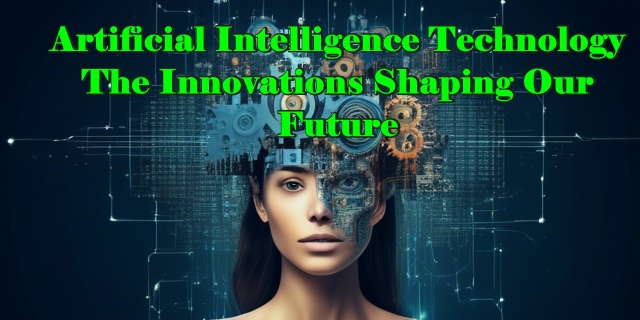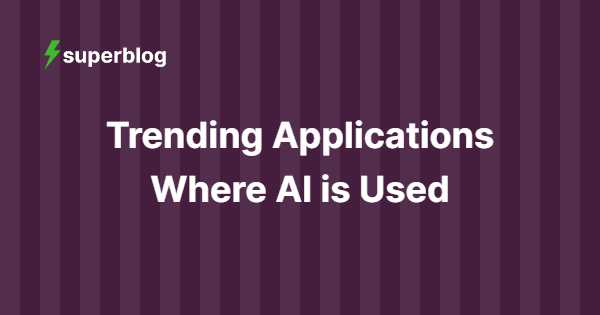ARTIFICIAL INTELLIGENCE (AI) IS NO LONGER A DISTANT FUTURE CONCEPT. IT HAS RAPIDLY PERMEATED EVERY ASPECT OF MODERN SOCIETY, SIGNIFICANTLY TRANSFORMING INDUSTRIES AND DIGITAL INFRASTRUCTURES.
AI AND DATA CENTRES:
- AI Revolution and the Data Centres: AI evolves and its adoption accelerates across sectors. It raises the demands placed on data centres, the backbone of the digital economies. Those demands continue to grow exponentially.
- Data Centres: Understanding the pivotal role that data centres play. They support AI’s expansion in the industry. Knowing the challenges and opportunities that come from this intersection. That knowledge is crucial for organizations to compete in the digital age.
GROWTH OF AI AND IMPACT ON DATA CENTRES:
- Introduction to AI’s Explosive Growth: AI is fueling a technological revolution. The global AI market may reach $2-4 trillion USD by 2030.
- AI Adoption: Adoption of AI is rapid. ChatGPT succeeded immensely. It acquired one million users in just five days. The adoption rate is unprecedented.
- AI Uses: AI has immense potential. Nonetheless, it demands significant data processing. It requires vast computational power.
- AI’s Reliance on Complex Infrastructure: AI depends on extensive datasets. The need for big data is crucial. It calls for sophisticated infrastructure.
- AI and Data Centres Interconnection: Data centres become part of this equation. Once seen as just storage spaces. They’ve evolved into intricate ecosystems. These ecosystems serve the needs of AI-driven applications.
- AI’s Complicated Processes: These spaces are now pivots, crucial in the functioning of AI. They are where AI processes are trained. Models are trained there.
EVOLUTION OF DATA CENTRES:
- Data Centres Evolving: Data centres are evolving. They need to meet demands of AI. Complying with regulations is key. They need to be sustainable.
- Role of Processors: At the core of operational demands lie three types of processors. The GPU, the CPU, and the TPU. These are crucial for efficient operation of AI systems.
- Significance of GPUs: GPUs manage parallel computing tasks. They are ideal for training AI models that process large datasets at the same time.
- Importance of CPUs: CPUs provide versatility. They can execute multiple tasks at once. Often at a larger scale than CPUs.
- Introduction to TPUs: TPUs are specialized processors by Google. They are for high-efficiency AI tasks. They allow faster execution of complex AI operations.
- Transformation with Processors: Integration of the processors in the data centres has been transformative. They enable the centres to support the computational needs of AI workloads.
- Upgrades Required: However, this transformation requires upgrades in power, connectivity, and cooling infrastructure.
Power Demands and Energy Efficiency: AI’s thirst for computational power has increased. Consequently, data centres require more energy. Supporting AI workloads requires robust infrastructure. This meets the processing demands while maintaining energy efficiency.
Exploration of Renewable Energy and Energy Management: Data centres investigate renewable energy sources. They look at advanced energy systems. This helps in reducing their carbon footprint. It boosts operational sustainability.
Connectivity and Latency Reduction: Efficient data transfer is critical for AI apps. Especially those needing real-time processing. High-speed network connectivity is vital. To make sure data flows seamlessly is key.
Advanced Cooling Systems: AI workloads create heat in large amounts. This poses a challenge for data centres. Maintaining optimal operating temperatures can be difficult. It is challenging to keep temperatures optimal.
Challenges with Regulatory Compliance: As AI evolves, so do the regulations. Governments and international bodies introduce new laws. They address the risks linked to AI use. There are ethical concerns with AI.
New Legislation: For instance, the EU introduced the AI Act. It groups AI apps by risk. It ranges from minimal risk to unacceptable.
Expanding Cybersecurity Regulations: The NIS2 Directive is a great example. It spread cybersecurity laws. Now, they include digital infrastructure. Data centres are included in this framework.
Adapting to Evolving Regulations: Data centres must adapt fast. This is needed to comply with changing regulations. Ensuring regulatory compliance is vital. It mitigates legal risks. It builds trust with clients. Trust is key in a world where data is crucial. In addition, it is also vital to gain trust of stakeholders.
Compliance with AI-Specific Regulations: These regulations are specifically for AI. Compliance ensures data privacy. It also makes sure that ethical standards are adhered to. It is critical for the success of AI applications. This is especially important for data centres supporting these AI applications.
Future of AI in Data Centres:
The convergence of AI and data centre tech continues to progress. It marks a fundamental shift in digital infrastructure. Redesign. Recreate. These are the tasks at hand.
AI’s advance pushes data centres to evolve. It’s not about algorithms alone. Data centres influence the success of AI-driven apps.
These success is based on strong data centre foundations. Now, what’s the future? It’s the future of AI and data centres.
They combine. An interplay begins. In this interplay, digital infrastructure changes. It’s redesigned. It’s rebuilt. It’s reoperated.
The Future of AI-Driven Data Centres:
The ongoing convergence of AI and data centre tech represents a fundamental shift in how digital infrastructure is designed, built, and operated. As AI continues to advance, data centres will need to evolve in parallel to keep up with the increasing demands for computational power, energy efficiency, and regulatory compliance.
Key areas of focus for the future of AI-driven data centres include:
Scalability: Building scalable infrastructure. Accommodates the exponential growth of AI applications. While maintaining performance and efficiency. Sustainability: Investing in green technologies. Like renewable energy sources and energy-efficient cooling systems. To reduce the environmental impact of data centres.
Security:
Implementing robust cybersecurity measures. Protecting sensitive data. Ensuring the integrity of AI systems, in compliance with emerging regulations.
Innovation:
Embracing cutting-edge technologies. Such as quantum computing and edge computing. To further enhance the capabilities of AI and data centre infrastructure.
Conclusion:
AI is reshaping the digital landscape rapidly. Data centres are at the center of this transformation. As AI continues to revolutionize industries, the demands on data centres are rising. Organizations should invest in advanced infrastructure. Sustainable energy solutions and regulatory compliance are crucial. These help ensure that data centres support the future of AI.
Dependence on Data Centre Strengths:
The success of AI-driven applications depends not just on algorithms. It depends on data centres as well. They are the foundation that empowers these apps.
Huge Power of Algorithms:
The power of the algorithms is immense. Yet it is not sufficient. Data centres must also be strong. They are the pillars that enable AI-driven apps to rise.
A Future Beyond Imagination:
The future is exciting, thriving in innovation. It is a future that moves beyond our current imagination. Just as AI goes beyond our current comprehension.
Future of AI and Data Centres:
The future of AI intertwines with data centre technology. It ushers in an era of transformation. Altering the way digital infrastructure is architected. Constructed, and managed.
Future Advancements of AI:
Advancements in AI prompt the need for data centres to develop. Data centres have a long journey of evolution ahead. Keeping pace with the escalating requirement for processing capabilities. Greater emphasis on energy efficiency will be vital. So will compliance with regulations.
Future Cooperation of AI and Data Centres:
The future sees AI and data centres cooperating. AI will continue its progress. Data centres will need to align with AI’s evolution. As AI advances, data centres evolve. This will ensure they can meet the demands for computational power. Ensure energy efficiency and comply with regulations.
AI and Data Centres Integration:
The integration of AI and data centres will be closer. This is a vital aspect of the digital future. AI will depend upon data centres. Data centres will have to adapt for AI.
Data Centres and AI Evolving Together:
Data centres and AI will evolve together in the future. Growth in AI is inevitable. This growth leads to an evolution in data centres. Collaboration between the two is essential. To prevent obsolescence, they must support each other.
Growth of Data Centres with AI:
The growth of AI is interlinked with that of data centres. They both support the digital society. This growth is certain. The data centres will evolve in tandem with AI.
Humanizing the Digital Future:
The digital future is vast and exciting. It offers numerous possibilities. These possibilities can only be explored by us. We, the humans have a key role. We are the architects of this future. We can shape it with our choices. Our decisions are pivotal for the digital evolution.
Data Centres and AI Reshape Future:
Data centres and AI are reshaping the future. They are integral parts of the new wave of technology. Evolving to meet the demands of modern society. A future driven by innovation and technology. AI and data centres are at the forefront of this revolution.
AI and Data Centres: Pioneers of Change:
AI and data centres are innovators. They drive the change in the digital world. They alter the technology landscape. They create the future we live in. The future is shaped by human imagination. AI and data centres turn dreams into reality.
AI and Data Centres: Pioneers of Change:
AI and data centres are the forerunners. They lead in changing the digital world. They affect the technological landscape. The future we live in is shaped by them. It is crafted by human minds. They are the gateway to the rea

